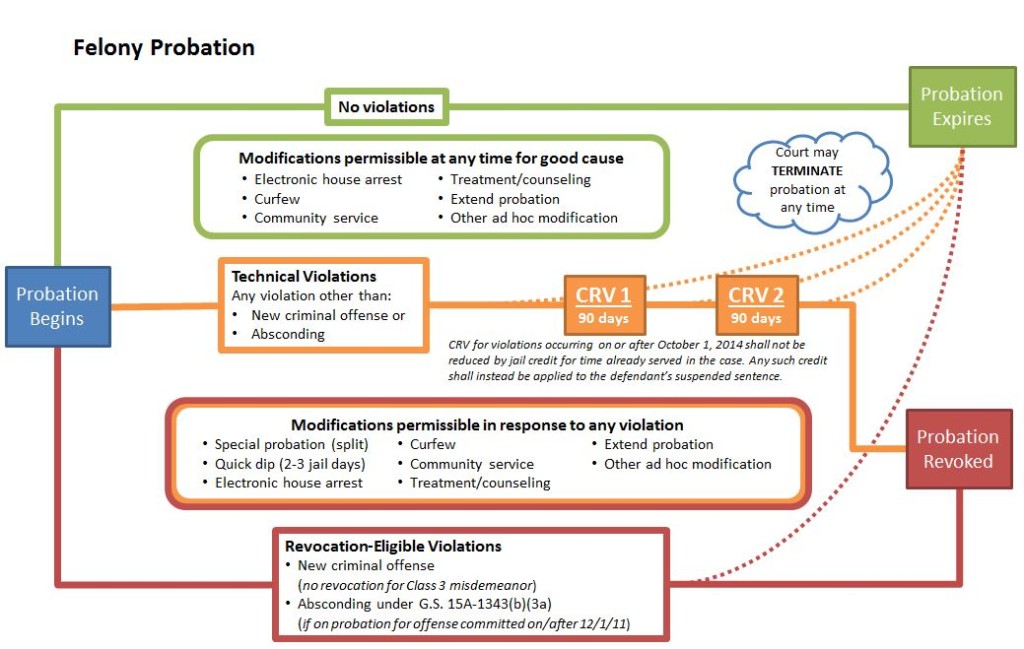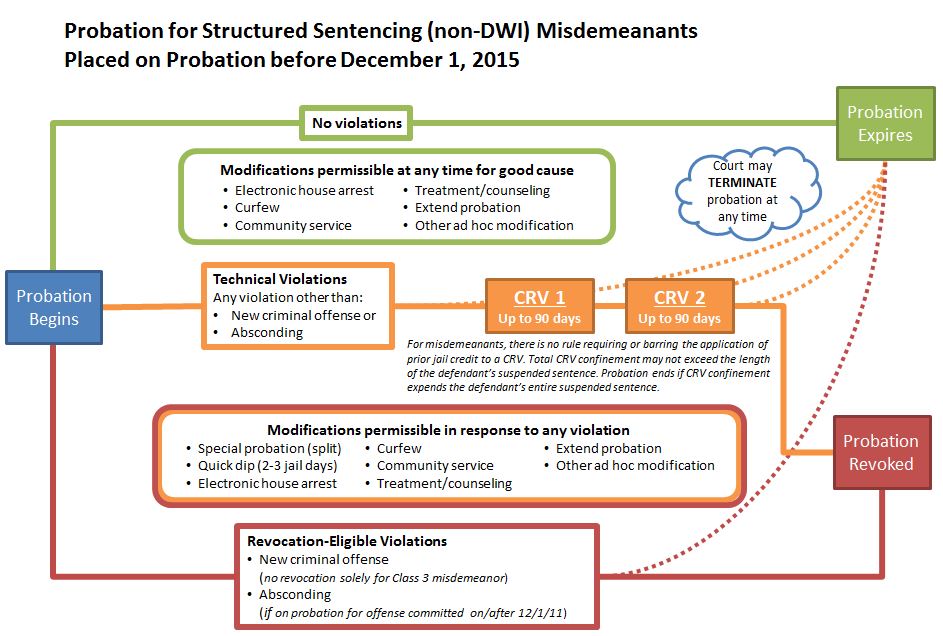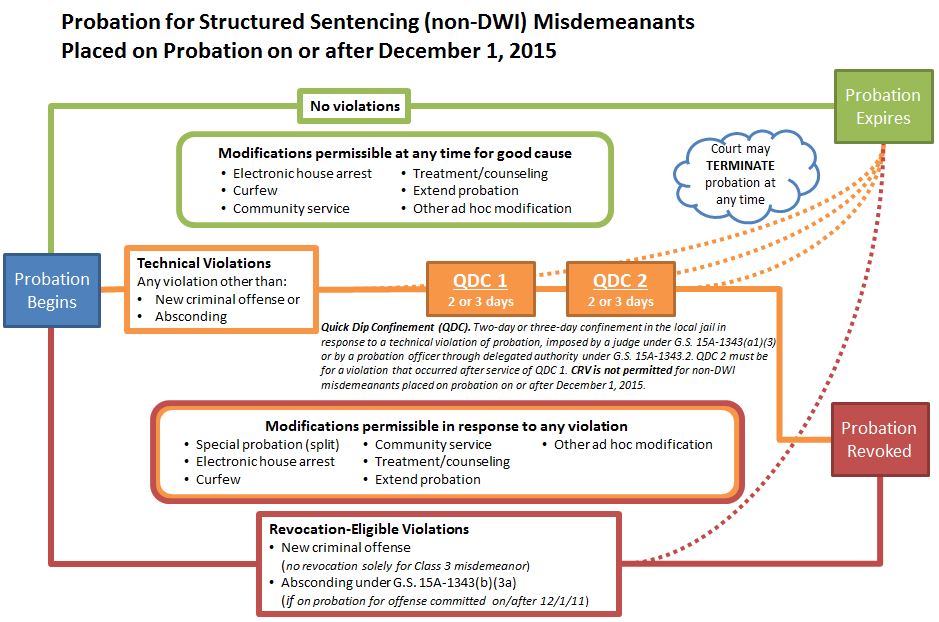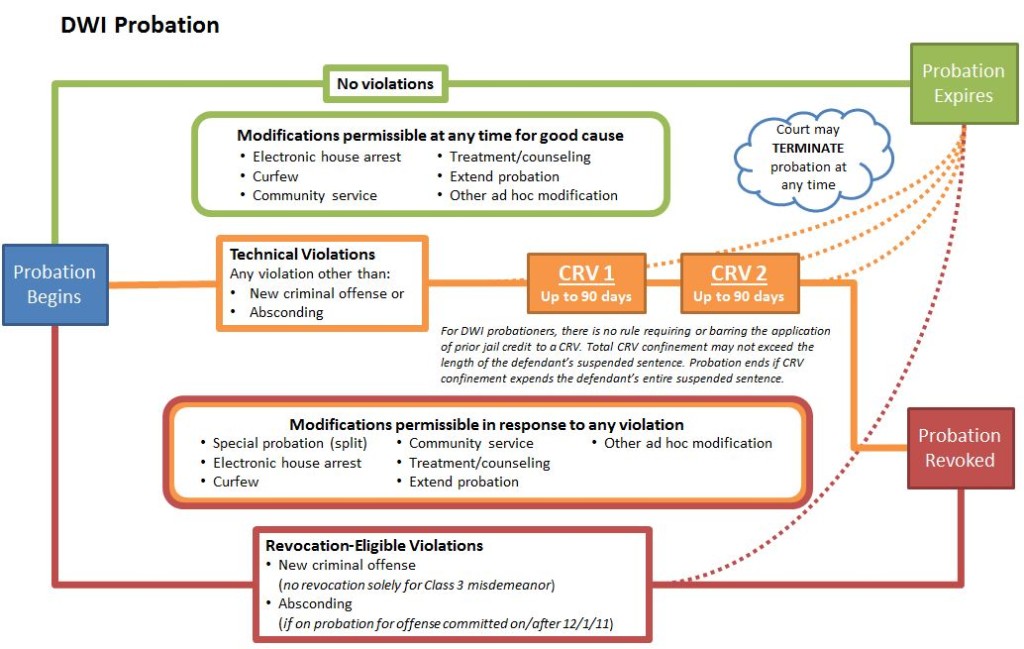These days, figuring out the permissible ways to respond to a probation violation is easy. All you need to know is the date of the offense for which the person is on probation. And the type of offense (felony, Structured Sentencing misdemeanor, or DWI). And the date the person was placed on probation. And the date of the alleged probation violation. And bear in mind, of course, that the person may be on probation for more than one offense, with different rules applicable to each case. Once you have all that—piece of cake!
Kidding aside, Justice Reinvestment and various related statutory amendments since 2011 have created a complex set of rules for probation violations. They vary depending on the type of crime in question and various effective dates. I struggle in my teaching to find some clear way to convey the big picture without leaving out any of the important details.
The diagrams below are my latest attempt at clarity.
As far as the big picture goes, there are really only three ways a probation period ends: expiration, termination, or revocation. For each type of crime—felony, Structured Sentencing misdemeanor, and DWI—the pathways from Point A (“Probation Begins”) to Points E (expiration), T (termination), and R (revocation) vary. For Structured Sentencing misdemeanants, the pathway differs depending on whether the defendant was placed on probation before or after December 1, 2015 (as described here).
Let me try to sum things up in words. Any probationer who stays on the green “No violations” lines shown below will eventually reach expiration. But even for non-violators, some modifications (shown in the green box) are permissible for good cause shown. G.S. 15A-1344(d).
For probationers who violate, what happens next will depend on the type of violation at issue. As indicated by the red lines, any probationer who commits a revocation-eligible new criminal offense or absconds may be revoked. The orange lines show that probationers who commit “Technical Violations”—violations other than a new criminal offense or absconding—may eventually be revoked, but only after serving two periods of CRV or two periods of quick dip confinement (QDC), as the case may be depending on the offense category in question. The various rules for applying jail credit to CRV are shown in the small print.
Note the dotted lines. They signify that even in the face of a revocation-eligible or technical violation, the court may allow the case to continue tracking toward expiration. In other words, the court may do nothing. Or it may choose one of the other modifications noted in the red-orange box, such as a split sentence or electronic house arrest. True, those alternate responses do not move the probationer forward toward eligibility for revocation for a technical violation. But they may nonetheless be appealing in light of their flexibility. For example, a felony split may be served in weekends on the county jail; a felony CRV is 90 straight days served in a state facility. There are trade-offs.
A few additional reminders come to mind. First, CRV is not a permissible response to a new criminal offense or absconding. G.S. 15A-1344(d2). And—somewhat oddly—you can neither revoke nor impose CRV for a Class 3 misdemeanor conviction. Finally, note the blue cloud in every diagram: the court may terminate probation early at any time. G.S. 15A-1342(b).
Here are the diagrams. If you’re having trouble reading the fine print, you can download all the diagrams here.



